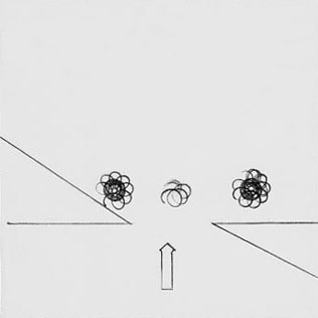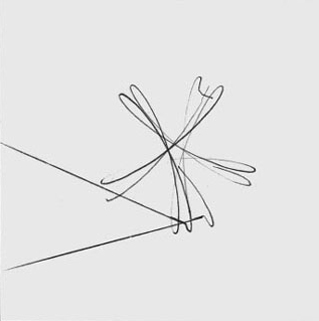INTERFERENCES AND DRAWINGS
Cima expressed the insignificance and inability of the image to render the world of the unconscious; it is no longer a figure, an object, it is simply a game, like in Miro’s ludic paintings.
Annalisa Cima proves that creating is a game, a game that is played free of the sails, fires, shadows and lights which characterized her previous work.
Just as Sartoris and Terragni are similar to the painters of the Thirties and Forties (Fontana, Soldati, Radice, Reggiani, Rho, Prina, Melotti), Annalisa Cima belongs to the great architecture of the twentieth century and her work ironically decodes the past, following the trend which has been active for quite some time, both in Europe and America.
Annalisa Cima is aware of the european and international artistic debate; she creates forms for air, light and endless spaces, as if they were lost in the limited earthly dimension. She opposes, as Brancusi does, the analytical intellectualism of Cubism with an absolute formal unity which identifies form and significance, objects and space.
Giulio Carlo Argan
“Your art has the power and the poetry of variation.
Your colored stripes are actually an unpredictable and open ensemble, which expresses the need for infinite compositions.
The same can be said about your human figures, who appear to be characterized by an expressive and theoretical necessity.
I recognize you in your directions, constantly coherent and restless.
Mayer Schapiro

Vertical inference, 1967
96 x 138 cm, Mixed media

Mental raptus, 1967
118 x 118 cm, Sculpture and mixed technique

Triadic process, 1968
30 x 30 x 100 cm
30 x 30 x 40 cm
30 x 30 x 80 cm
Mixed media Sculptures

Eros, 1968
11,5 x 11,5 cm

The lines and the flower, 1968
11,5 x 11,5 cm

Parallels and the flower, 1968
11,5 x 11,5 cm

The revolution of flowers, 1968
11,5 x 11,5 cm
